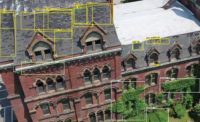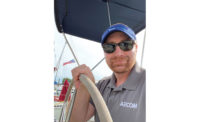When it comes to inspecting old structures that may be damaged by water and salts, an engineer can rarely rely on visual inspection to provide enough information to justify a declaration that a building is structurally sound.
But that is exactly what the engineer appears to have done twice in four years before a collapse at a two-story shopping mall and rooftop parking deck in Ontario. The second inspection was made two months prior to a June 23 failure that sent slabs crashing down in a section of the mall, killing Doloris Perizzolo, 74, and Lucie Aylwin, 37. Their survivors and families filed a lawsuit Oct. 1 in Ontario Superior Court of Justice in Sault Ste. Marie against engineer M.R. Wright & Associates; the mall's owner, Eastwood Mall Inc.; and the town of Elliot Lake, 375 miles northwest of Toronto, where the mall is located. The Ontario Provincial Police are conducting an investigation.
The tragedy prompted engineering practice experts to questions why M.R. Wright & Associates and President R.G.H. Wood had attested to the soundness of the beams based on visual inspection alone. On May 3, Wood wrote the owner of the Algo Centre Mall that the steel beams over the shops were "still structurally sound." In doing so, Wood and M.R. Wright seemed to stray from accepted industry practices that call for such assurances to be based on more extensive and costly testing, especially for older structures known to have leaked for decades.
"When examining older parking structures, many things can be going on hidden from view that could be catastrophic in nature," says John Cronin, executive director of the National Academy of Building Inspection Engineers, an association based in Shelter Island, N.Y. Especially with a reinforced concrete parking structure in a snowy climate, "going through visually and telling you this is structurally sound or not, that's a treacherous road to go down."
M.R. Wright had examined the structure in 2009. In its report at that time to the mall's owner, Wood described the 32-year-old structure as a steel frame of beams and columns supporting 8-in.-deep hollow-core precast prestressed concrete slabs spanning 27- to 31-ft-wide spaces between the steel beams. A 2- to 3-in.-deep concrete topping covers the roof slabs.
The 2009 report contains photos of rooftop ponding, rusting steel beam surfaces missing fireproofing and on one grid line "efforvescence [sic] stain at precast slab joints."
When Wood reported to the mall's manager about conditions in October 2009, his major concern was lost fireproofing on the beams. Based on the conditions found, "it is our opinion that our inspection revealed no visual structural concerns both with the structural steel or prestressed slabs" and that the positive camber on the slabs indicated "significant additional load-carrying capacity."
No Evidence of Additional Testing
There is no evidence or suggestion of additional, non-visual testing in the 2009 report or Wood's letter in May. And that may indicate, legal experts suggest, a less than vigilant attitude when it came to matching the testing to the conclusions and the liability assumed. Neither the M.R. Wright officials nor the mall owner could be reached for comment about the accident or the insurers involved.
Glen R. Mangold, managing director for A&E professional coverage of insurer Markel Corp., has no connection to those involved. But he says the scope of service is key. "If they were to check for steel beam deterioration or integrity, that's one thing. If the scope were to determine if a roof was structurally sound, I would expect there to be more than a visual review."
A visual inspection alone would likely be a very low-fee project, suggests Mangold. He adds, "Don't expand services beyond scope or opine in your report."




Post a comment to this article
Report Abusive Comment